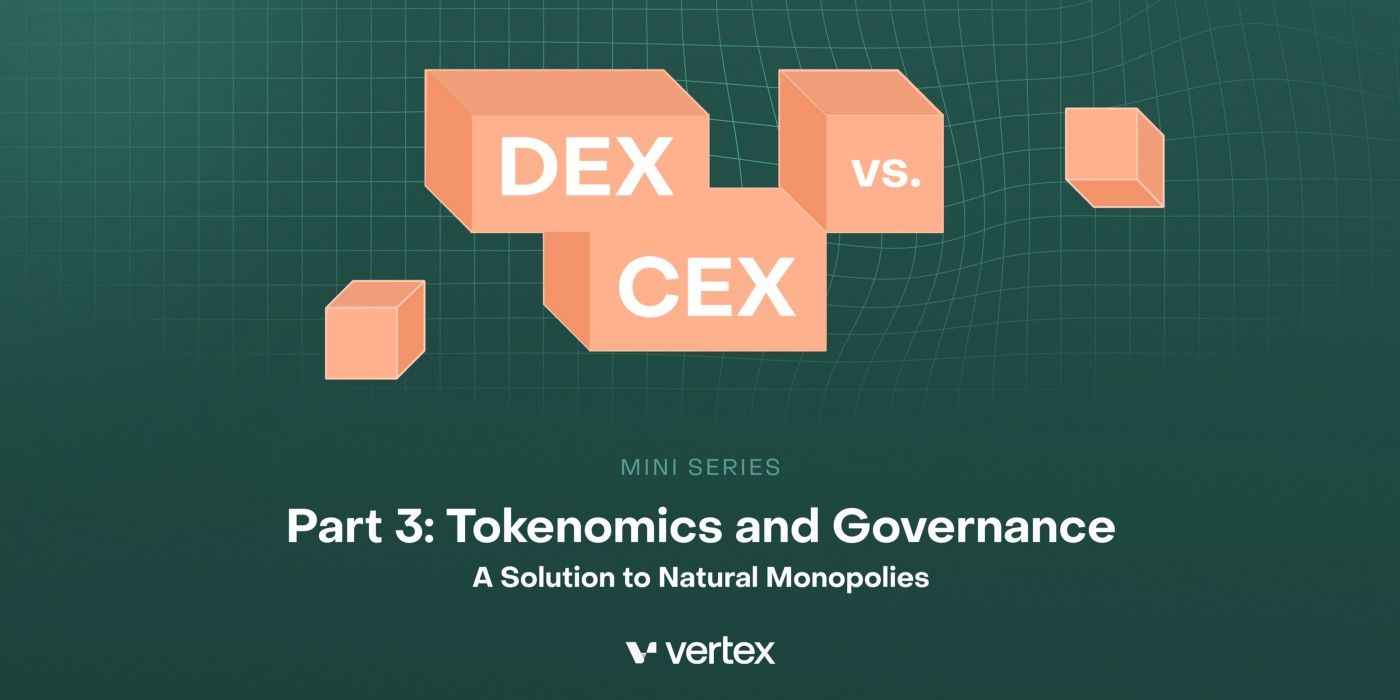Part 3: Tokens and Governance — A solution to natural monopolies

TLDR: Making exchanges work in the best interests of their communities is essential. We advocate for user-driven control of exchanges to ensure value is kept within an ecosystem for long term growth.
In Part 1 of our ‘Call to Arms’ series we discussed how exchanges are both public goods and natural monopolies. In our last post we identified the key features of the ideal exchange. We noted that exchanges should own their role as public goods and serve the community. This post addresses how blockchain based governance can de-monopolize an exchange and distribute power to the community. This is not a new idea, historically exchanges were not owned by remote shareholders, but by their members. These socialized ownership structures ensure alignment of interests and healthy growth of these essential pieces of financial infrastructure.
Whilst smart contract design can achieve many aims, decentralized governance is also needed to distribute power and ensure that an exchange functions in alignment with its users to echo the old ‘members’ systems. Careful tokenomics design can divert power to those most committed to the exchange’s success and help ensure healthy growth in the long term. These novel forms of governance give decentralized exchanges access to a diversity of ideas, and the ability to craft structures specific to their mission.
In order to decentralize exchange governance we identify 3 core principles:
- Activity = Power: The more involved a participant is with the exchange the more influence they should have over exchange operations.
- Fees = Development: Fees earned by an exchange go back to the community or are used to improve the exchange
- Tokens drive governance: Protocol utility tokens can be used to define and track a participant’s involvement within an exchange.
Our aim is to increase participation and value distribution, allowing control to flow to the most engaged participants and those who are well aligned with the exchange’s long term interests. Over time this community of engaged users will create a better exchange for themselves and others. Here’s why tokens do it so well:
- Utility: Using tokens to denote participation in our ecosystem allows us to tap into some of the unique properties of these on-chain representations of value. Tokens can offer a wide range of purposes within an ecosystem whereas conventional forms of participation (ie. stocks) simply denote fractional ownership and voting rights.
- Tokenomics: Token design can address different time horizons whereas conventional models cannot. Long term investors and short term traders can be distinguished to help promote long term interest in the ecosystem.
- Transparency: Being on-chain, tokens exhibit full transparency in how they are used or transacted, allowing anyone to track ownership and behavior in a way unavailable to centralized participants.
Participation, Tokens, and Power
An exchange is many things: trading, lending, clearing, settlement, margin, risk. The list varies from exchange to exchange, but these core functions amongst others will be present. Concurrently, governance varies as a host of individuals aim to exert control over each of these functions. In centralized institutions each of these functions is wrapped into one opaque entity.
Decentralization involves moving trading functions to the blockchain and distributing governance to users. But what does this mean practically?
Vertex Protocol’s tokenomics plan lays out a number of key ways to do this:
- Staking tokens to back exchange risk
- Using tokens to pay for fees at a discount
- Time weighted on-chain voting rights
Of course, these plans will evolve over time. The beauty of decentralization is that communities may create their own bespoke designs to suit their needs.
Recycling Value
Any enterprise requires proper management of value to grow. In centralized structures, value accrues to remote shareholders, and generally leaves the ecosystem. Decentralized structures provide the opportunity to recycle value back into the ecosystem and incentivize community-centric growth.
Our mission is creating the best decentralized trading experience possible. Community-centric governance will be the heart and soul of what makes the Ideal Exchange a reality. To do this, we must keep value within the ecosystem to help incentivize further development. Those most involved must reap the benefit of their efforts, encouraging long term thinking and avoiding the short term rent-seeking so common in current exchanges.
We are building an exchange for the many and not for the few. Decentralized governance and well-designed tokenomics will help us do that.
An ideal exchange will be one that empowers and enriches its community. Decentralization achieves this by distributing power and value to those who care, and in doing so cements loyalty and input from its users.
Read Part 4 of the CEX vs. DEX series here.